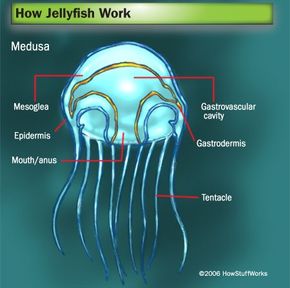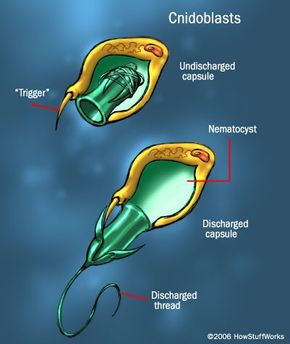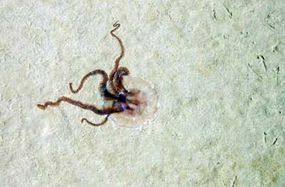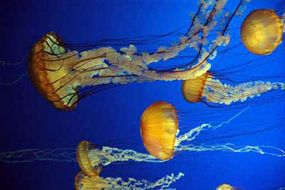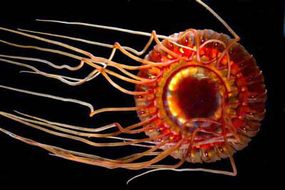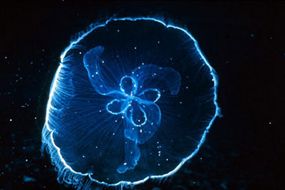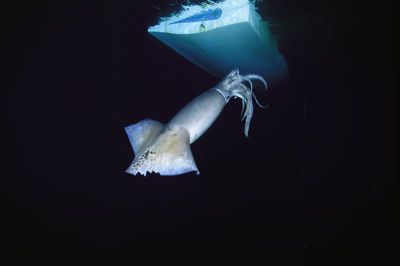Jellyfish are probably some of the most unusual and mysterious creatures that you'll ever encounter. With their gelatinous bodies and dangling tentacles, they look more like something from a horror movie than a real animal. But if you can get past the weirdness -- and the fact that getting too close to one results in a nasty sting -- you'll discover that jellyfish are pretty fascinating. They've been around for more than 650 million years, and there are thousands of different species, with more species discovered all of the time.
In this article, we'll learn all about these mysterious animals and find out what to do if you do happen to get in the way of a stinging jellyfish tentacle.
Advertisement
Jellyfish live mainly in the ocean, but they aren't actually fish -- they're plankton. These plants and animals either float in the water or possess such limited swimming powers that currents control their horizontal movements. Some plankton are microscopic, single-celled organisms, while others are several feet long. Jellyfish can range in size from less than an inch to nearly 7 feet long, with tentacles up to 100 feet long.
Jellyfish are also members of the phylum Cnidaria, (from the Greek word for "stinging nettle") and the class Scyphozoa (from the Greek word for "cup," referring to the jellyfish's body shape). All cnidarians have a mouth in the center of their bodies, surrounded by tentacles. The jellyfish's cnidarian relatives include corals, sea anemones and the Portuguese man-o'-war.
Jellyfish are about 98 percent water. If a jellyfish washes up on the beach, it will mostly disappear as the water evaporates. Most are transparent and bell-shaped. Their bodies have radial symmetry, which means that the body parts extend from a central point like the spokes on a wheel. If you cut a jellyfish in half at any point, you'll always get equal halves. Jellyfish have very simple bodies -- they don't have bones, a brain or a heart. To see light, detect smells and orient themselves, they have rudimentary sensory nerves at the base of their tentacles.
A jellyfish's body generally comprises six basic parts:
- The epidermis, which protects the inner organs
- The gastrodermis, which is the inner layer
- The mesoglea, or middle jelly, between the epidermis and gastrodermis
- The gastrovascular cavity, which functions as a gullet, stomach, and intestine all in one
- An orifice that functions as both the mouth and anus
- Tentacles that line the edge of the body
An adult jellyfish is a medusa (plural: medusae), named after Medusa, the mythological creature with snakes for hair who could turn humans to stone with a glance. After the male releases its sperm through its orifice into the water, the sperm swim into the female's orifice and fertilize the eggs.
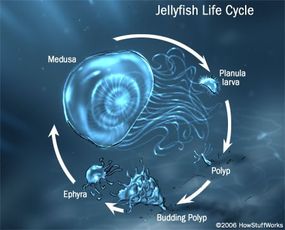
Several dozen jellyfish larvae can hatch at once. They eventually float out on the currents and look for a solid surface on which to attach, such as a rock. When they attach they become polyps -- hollow cylinders with a mouth and tentacles at the top. The polyps later bud into young jellyfish called ephyrae. After a few weeks, the jellyfish float away and grow into mature medusae. A medusa can live for about three to six months.
Advertisement
